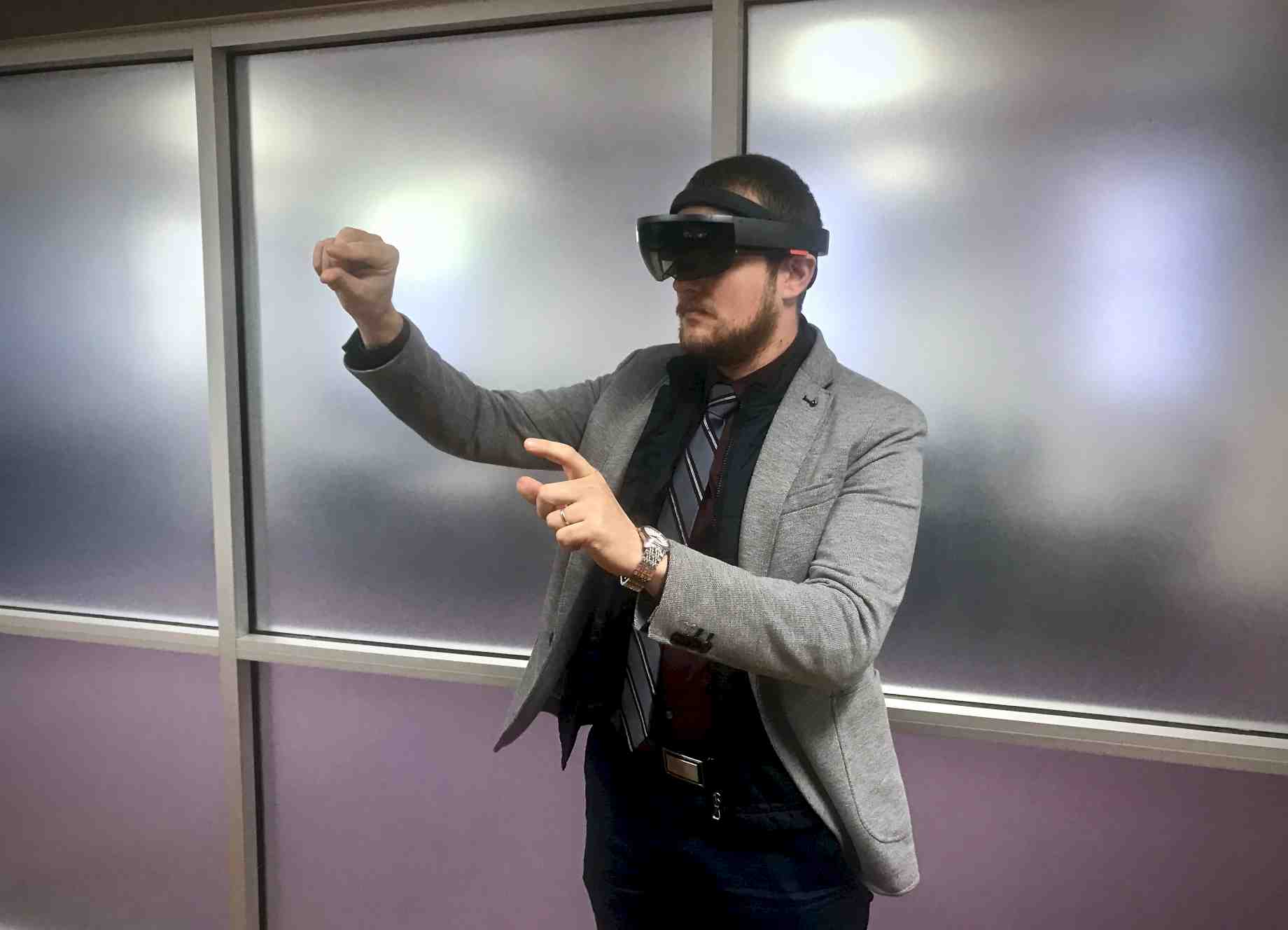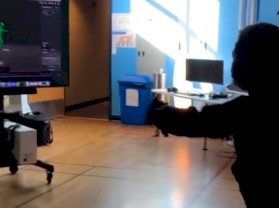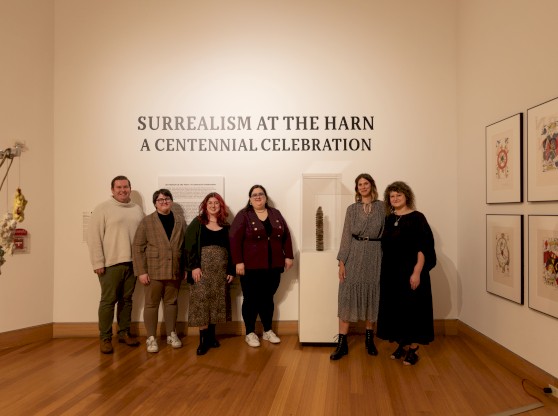Digital Worlds Institute associate professor Angelos Barmpoutis sees more than you do.
With his eyes enveloped by high-tech, augmented-reality glasses, he sees a brain model in one of the Institute’s conference rooms. All you see is a desk.
Barmpoutis, in partnership with a colleague in the UF Department of Physical Therapy, received a two-year grant that allowed him to test augmented- and virtual-reality technologies. Today, his students talk to him while the space-age HoloLens is strapped around his head.
The glasses are a part of Barmpoutis’s uniform; he wears them almost every day. At the end of the semester, he said he’ll deliver a questionnaire to his students and colleagues to evaluate how they felt while he was wearing the glasses. He will learn if those in Digital Worlds thought he was polite, engaged and paying attention.
Barmpoutis uses the glasses to create augmented-reality spaces, where virtual holograms sit in fixed points in the room. On the wall in front of him, he sees a “window” into his email. On his left, a spaceship is suspended in mid-air.
While anyone not wearing the glasses isn’t able to see what holograms are in the room, the computer knows where the items are.
“It knows what to show me,” he said.
The glasses Barmpoutis wears are transparent enough to see through. Rather than taking away the context of the user’s surroundings, they allow the wearer to see both the physical, like the chairs and desks in a classroom, and the virtual, like the spaceship and email browser.
Barmpoutis said the future of education lies in augmented reality. Right now, each student in his class can log into an attendance software, and their name will appear in a hologram box behind their seat. When Barmpoutis looks out to his class, he can call new students by name, even in their first day of classes.
Eventually, he said he may bring in software that allows students to give him a discreet signal when they’re confused or bored.
“It’s like I see through your brain — every student’s brain,” he said.



